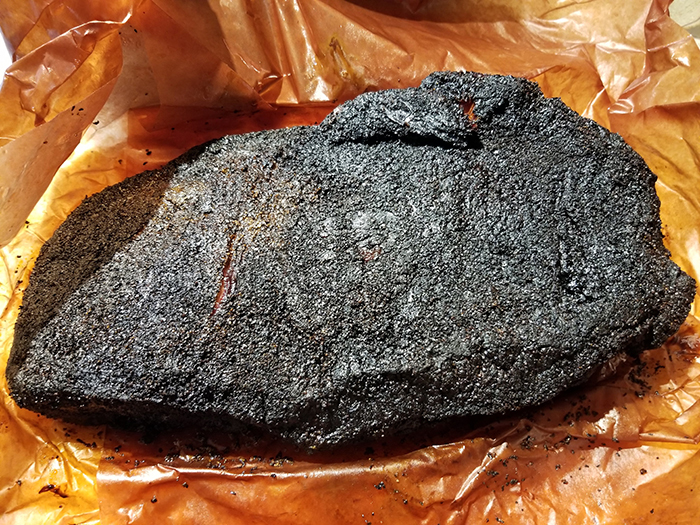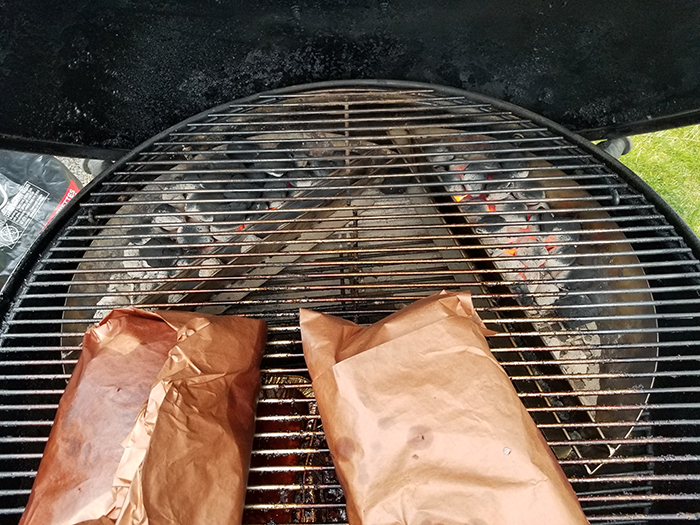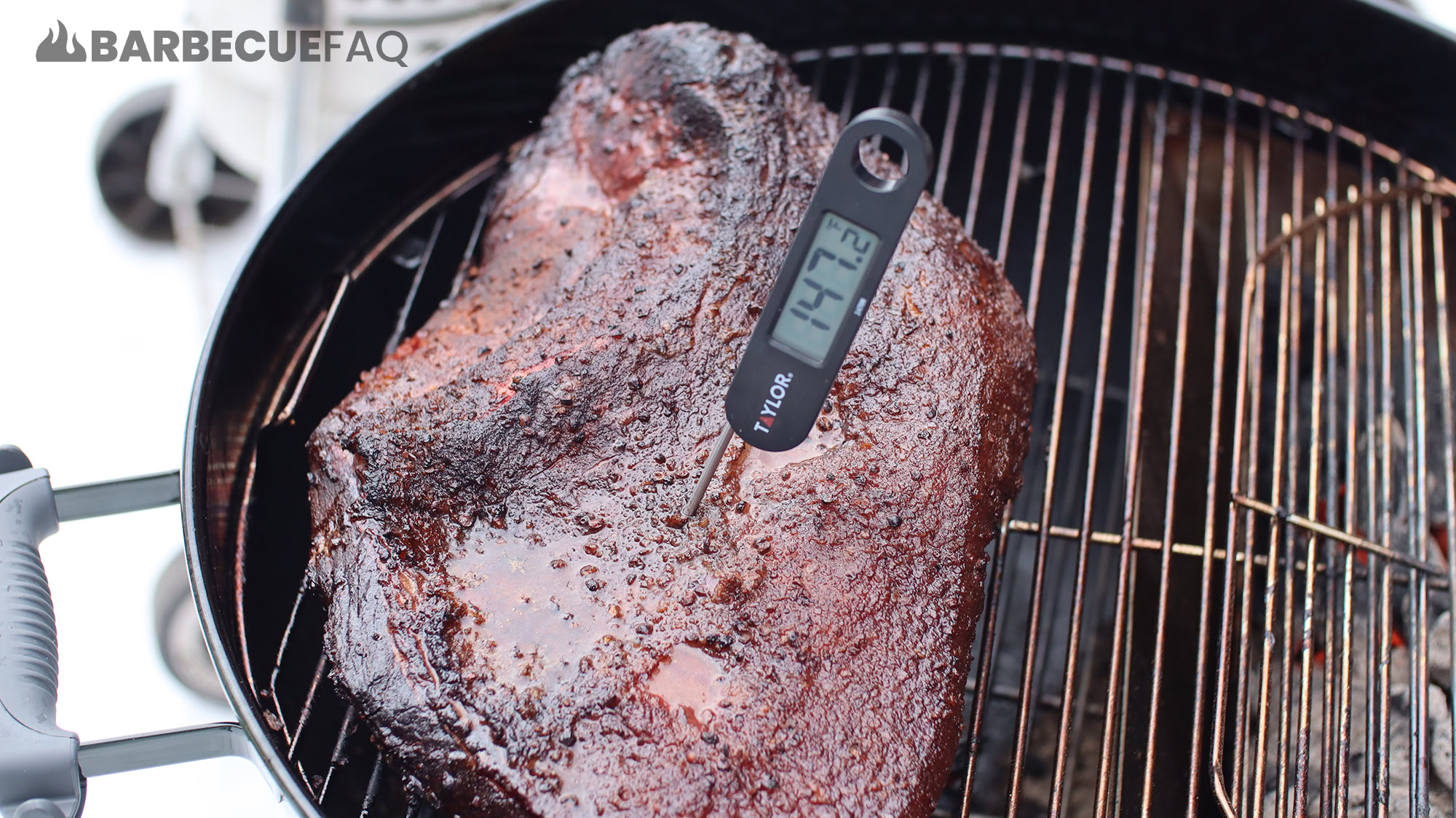Brisket is a celebrated cut of meat in the barbecue world, but perfecting its preparation can be a challenge. One frequently asked question among both novice and seasoned pitmasters is, "What temperature should I wrap my brisket?" Wrapping brisket at the right temperature is essential for achieving a tender, juicy, and flavorful dish. In this comprehensive guide, we will explore everything you need to know about the "wrap temp" and its impact on the quality of your brisket.
Whether you're cooking brisket for a family get-together, a casual backyard barbecue, or a competitive event, understanding the intricacies of the cooking process is crucial. Wrapping brisket is a technique that significantly influences its texture and flavor, making the ideal temperature to wrap a pivotal factor in your success.
In this article, we will delve into the science behind wrapping brisket, offer expert advice, and address frequently asked questions to help you achieve the perfect brisket every time. Let’s get started!
Read also:Exploring Ssbbw Juicy Jackie A Comprehensive Guide
Table of Contents
- The Science Behind Wrapping Brisket
- Determining the Right Temperature to Wrap Brisket
- Exploring Wrap Options for Brisket
- When Should You Wrap Your Brisket?
- The Impact of Wrapping on Brisket
- Avoiding Common Pitfalls
- Troubleshooting Issues with Brisket Wrapping
- Expert Recommendations for Wrapping Brisket
- Delicious Brisket Recipes to Try
- Final Thoughts
The Science Behind Wrapping Brisket
Wrapping brisket is more than just a cooking method—it is deeply rooted in science. When you smoke brisket, it undergoes a phase known as the "stall." During this phase, the internal temperature of the meat stabilizes, and the cooking process slows down. This stall happens because moisture evaporates from the surface of the brisket, cooling it down.
By wrapping the brisket, you create a more humid environment, which helps retain moisture and accelerates the cooking process. This technique, often referred to as the "Texas Crutch," also aids in breaking down tough connective tissues, resulting in a more tender brisket. Understanding the science behind this method can significantly enhance your cooking experience.
Determining the Right Temperature to Wrap Brisket
The ideal temperature to wrap your brisket typically falls between **160°F and 170°F**. At this stage, the meat has already developed a robust bark, and wrapping it will help prevent it from drying out during the stall. However, the exact temperature can vary depending on your cooking method and personal preference.
Factors to Consider:
- Brisket Size: Larger briskets may require wrapping at a slightly lower temperature to ensure even cooking.
- Smoker Temperature: If your smoker operates at a higher temperature, you might need to wrap earlier to avoid overcooking the brisket.
- Desired Texture: Some pitmasters prefer a drier bark, while others enjoy a juicier brisket. Adjust your wrap temperature based on your preference.
Exploring Wrap Options for Brisket
When it comes to wrapping brisket, you have several options, each offering its own set of benefits:
1. Butcher Paper
Butcher paper is a popular choice because it allows some moisture to escape while still retaining enough to keep the brisket tender. It is also easier to handle than foil and does not trap as much steam, which can lead to a mushy texture.
2. Aluminum Foil
Aluminum foil creates a completely sealed environment, which is perfect for speeding up the cooking process. However, it can make the bark softer and less crispy, so some pitmasters prefer to switch to butcher paper after a certain point.
Read also:Exploring The Tickle Community Vk A Comprehensive Guide
3. Combination Method
Some pitmasters use a combination of foil and butcher paper. They start with foil to speed up the cooking and then switch to butcher paper for the final stage to develop a better bark. This method offers the best of both worlds.
When Should You Wrap Your Brisket?
The timing of when to wrap your brisket is as important as the temperature. Wrapping too early can prevent the bark from forming properly, while wrapping too late can result in a dry brisket. Here are some guidelines:
- Monitor the internal temperature of the brisket closely.
- Look for visual cues, such as the development of a dark crust (bark).
- Consider the cooking time and adjust accordingly.
As a general rule, wrap your brisket when it reaches **165°F** and has developed a good bark. This ensures that the meat will remain moist and tender during the stall.
The Impact of Wrapping on Brisket
Wrapping brisket has several effects on the cooking process:
1. Accelerates Cooking
By creating a more humid environment, wrapping helps speed up the cooking process, reducing the time spent in the stall.
2. Retains Moisture
The wrap prevents moisture from evaporating, keeping the brisket juicy and tender.
3. Softens Connective Tissues
The increased humidity helps break down tough connective tissues, resulting in a more tender brisket. However, wrapping can also have drawbacks, such as softening the bark. To mitigate this, some pitmasters unwrap the brisket for the final stage of cooking to allow the bark to crisp up again.
Avoiding Common Pitfalls
Even experienced pitmasters can encounter issues when wrapping brisket. Here are some common mistakes to avoid:
- Wrapping Too Early: This can prevent the bark from forming properly.
- Wrapping Too Late: Waiting too long can result in a dry brisket.
- Using the Wrong Wrap: Foil can make the bark softer, while butcher paper allows for better bark development.
- Not Monitoring Temperature: Keep a close eye on the internal temperature to ensure you wrap at the right time.
Troubleshooting Issues with Brisket Wrapping
If your brisket does not turn out as expected, there are solutions. Here are some common issues and how to resolve them:
1. Dry Brisket
If your brisket turns out dry, it might be because you did not wrap it early enough or did not use enough moisture during the cooking process. Try wrapping at a lower temperature next time and consider adding a splash of apple juice or beef broth to the wrap.
2. Mushy Bark
A mushy bark is often the result of using foil instead of butcher paper. Switch to butcher paper for the final stage of cooking to allow the bark to crisp up again.
3. Uneven Cooking
If your brisket is cooked unevenly, it might be due to inconsistent smoker temperatures or wrapping at the wrong time. Ensure your smoker is properly calibrated and wrap the brisket when it reaches the ideal temperature.
Expert Recommendations for Wrapping Brisket
Here are some expert tips to help you master the art of wrapping brisket:
- Use a meat thermometer to monitor the internal temperature accurately.
- Experiment with different types of wraps to find what works best for your taste.
- Inject the brisket with a flavorful marinade before wrapping to enhance the flavor.
- Let the wrapped brisket rest for at least 30 minutes before unwrapping and slicing.
By following these tips, you will be well on your way to creating a perfectly cooked brisket every time.
Delicious Brisket Recipes to Try
Now that you know how to wrap your brisket, here are a few recipes to try:
1. Classic Smoked Brisket
This recipe uses a simple spice rub and applewood chips for a classic flavor profile. Wrap the brisket at 165°F and let it cook until it reaches an internal temperature of 203°F.
2. Spicy Dry Rub Brisket
Add a kick to your brisket with a spicy dry rub made from chili powder, cayenne, and smoked paprika. Wrap the brisket in butcher paper at 170°F for a tender and flavorful result.
3. Beer-Infused Brisket
Inject the brisket with a beer-based marinade before wrapping it in foil at 160°F. The beer adds a rich, malty flavor that complements the smoky notes of the brisket.
Final Thoughts
In summary, knowing the correct temperature to wrap your brisket is crucial for achieving a tender, juicy, and flavorful dish. By wrapping at the right temperature and using the appropriate wrap method, you can ensure that your brisket turns out perfectly every time.
We encourage you to experiment with different techniques and recipes to find what works best for your taste. Don’t forget to share your results with us in the comments section below, and explore our other articles for more barbecue tips and tricks.
Happy smoking, and enjoy your delicious brisket!


